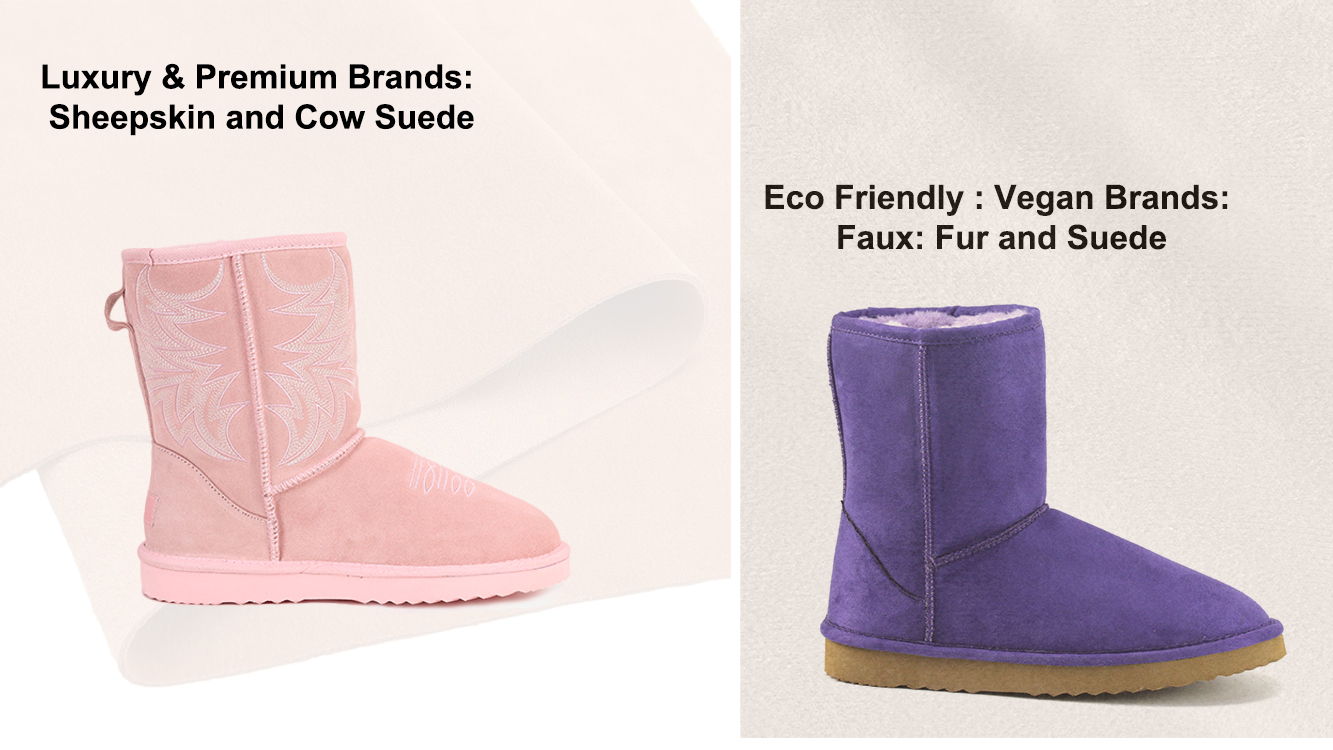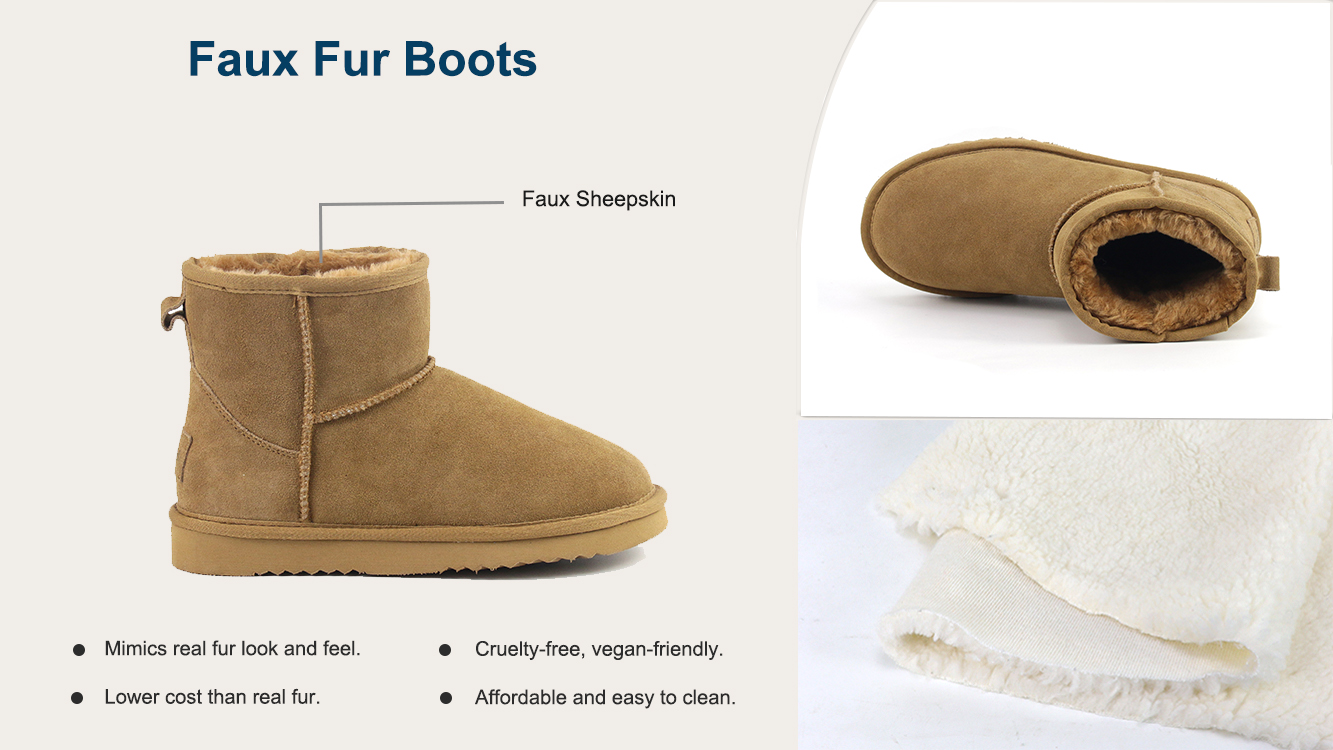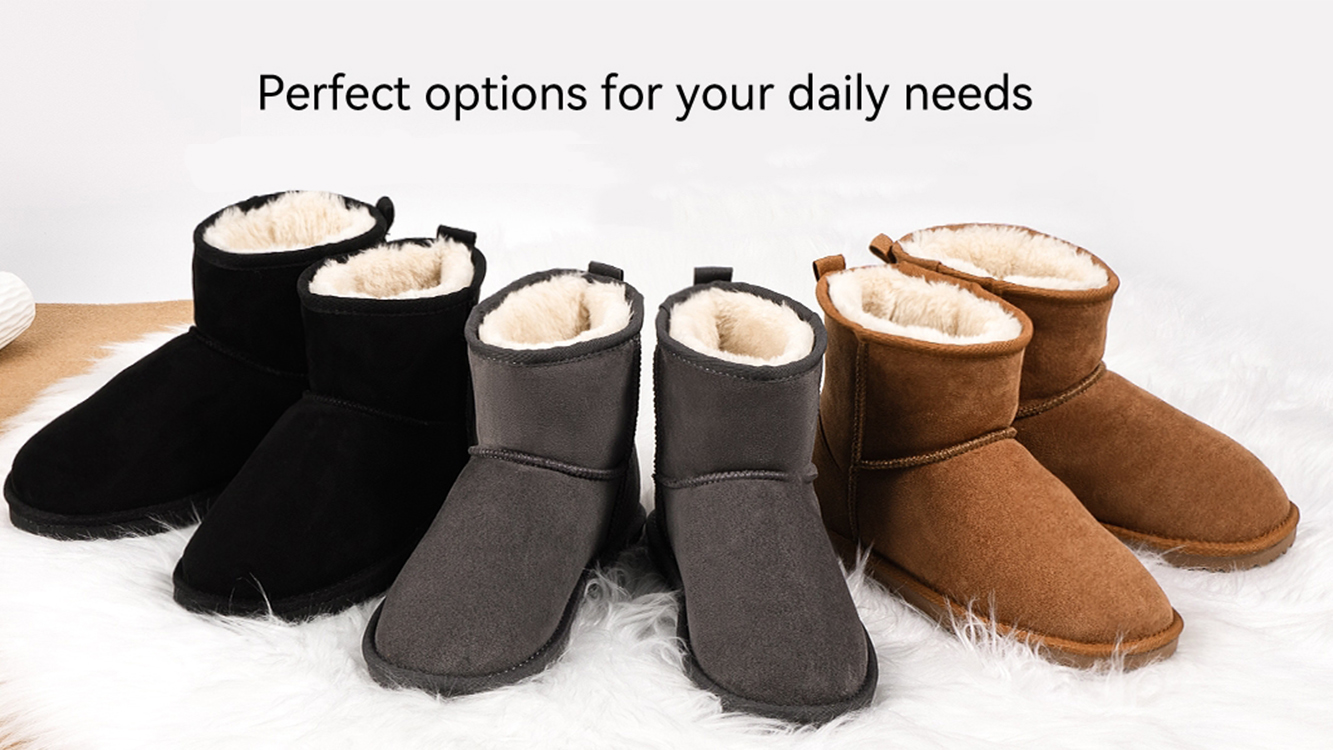Choosing the right material for boots can be confusing. Each type—sheepskin1, faux fur2, and suede3—has unique benefits and drawbacks. If you don’t know the differences, you might end up with a pair that doesn’t meet your expectations.
Sheepskin, faux fur, and suede each offer different levels of warmth, durability, and care requirements. Sheepskin1 is the warmest and most breathable, faux fur2 is cost-effective and animal-friendly, while suede3 provides style but requires extra care to maintain its look.
I’ve worked with footwear for years, and I’ve seen customers regret choosing the wrong materials. Let’s break down the pros and cons so you can make the best decision for your needs.
What Are the Key Differences Between Sheepskin, Faux Fur, and Suede?

Different materials perform differently in comfort, durability, and price. Knowing what sets them apart helps you choose the right pair of boots.
Sheepskin1 is warm and breathable, faux fur2 is budget-friendly and easy to maintain, and suede3 offers a luxurious look but requires special care.
Material Breakdown Table
| Material | Warmth | Breathability | Durability | Maintenance | Price Range |
|---|---|---|---|---|---|
| Sheepskin1 | ★★★★★ | ★★★★★ | ★★★★☆ | High | $$$$ |
| Faux Fur2 | ★★★☆☆ | ★☆☆☆☆ | ★★★☆☆ | Low | $$ |
| Suede3 | ★★★★☆ | ★★★☆☆ | ★★★☆☆ | High | $$$ |
Is Sheepskin Worth the Investment?

Sheepskin1 is a premium material often used in high-end winter boots. It’s warm, breathable, and naturally moisture-wicking, making it ideal for cold climates.
Sheepskin boots1 provide maximum warmth and comfort. They regulate temperature naturally, but they require special cleaning and are not waterproof.
Pros and Cons of Sheepskin Boots
Pros:
- Extremely warm and soft
- Breathable and moisture-wicking
- Long-lasting with proper care
Cons:
- Expensive
- Requires careful cleaning
- Can stretch over time
Are Faux Fur Boots a Good Alternative?

Faux fur boots2 mimic the look and feel of real fur but at a lower price. They are cruelty-free, making them a popular choice for vegan shoppers.
Faux fur boots2 are affordable and easy to clean, but they lack breathability and don’t last as long as natural materials.
Pros and Cons of Faux Fur Boots
Pros:
- Budget-friendly
- Animal-friendly
- Easy to clean and maintain
Cons:
- Less breathable
- Can feel less warm than real fur
- Prone to matting and wear
Why Choose Suede for Style?

Suede boots3 are known for their stylish, velvety appearance. They work well for casual and dressy outfits but require regular care to maintain their look.
Suede boots3 are fashionable and versatile but require careful maintenance to avoid stains and water damage.
Pros and Cons of Suede Boots
Pros:
- Stylish and elegant
- Soft and flexible
- Available in many designs
Cons:
- Susceptible to stains and water damage
- Requires suede protectant spray
- Less warm than sheepskin
Which Material Should You Choose?
Choosing the right material depends on your needs. If you prioritize warmth and durability, sheepskin1 is the best option. If you want an affordable and cruelty-free alternative, faux fur2 is a great choice. For style and versatility, suede3 is your go-to material.
Quick Decision Guide
- For extreme warmth & durability: Choose sheepskin1.
- For affordability & ethical concerns: Go with faux fur2.
- For fashion-forward styling: Pick suede3.
Conclusion
Understanding the differences between sheepskin1, faux fur2, and suede3 helps you make a smarter purchase. Whether you prioritize warmth, budget, or style, there’s a perfect boot material for you. Choose wisely, and your boots will last for seasons to come!
Footnotes
-
Sheepskin material guide - Learn why sheepskin is the warmest and most breathable material for winter boots. ↩ ↩ ↩ ↩ ↩ ↩ ↩ ↩ ↩
-
Faux fur advantages - Discover why faux fur is an affordable, ethical alternative to real fur. ↩ ↩ ↩ ↩ ↩ ↩ ↩ ↩ ↩
-
Suede care and styling - Find out how to maintain and style suede boots for long-term use. ↩ ↩ ↩ ↩ ↩ ↩ ↩ ↩ ↩

